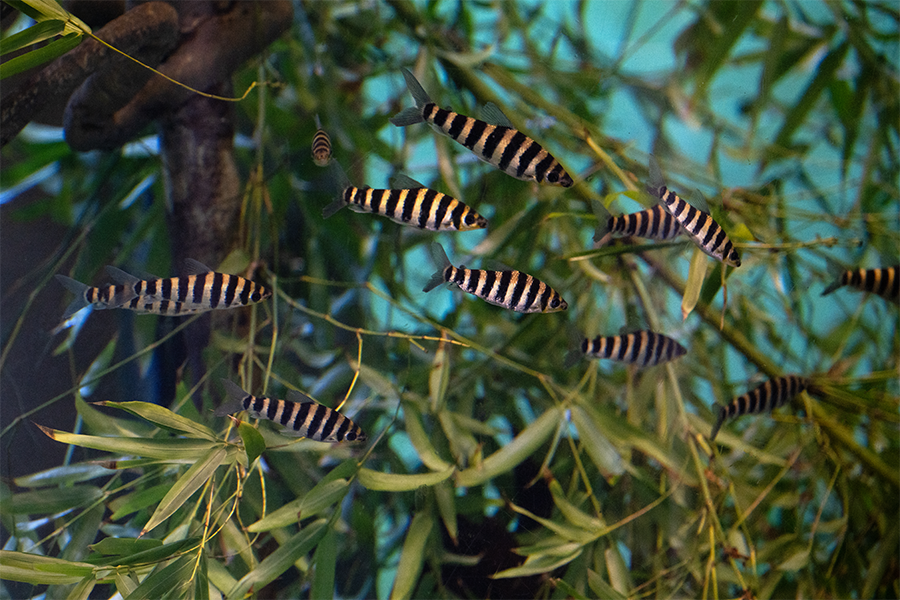Summary of Zoo Update with Zoo Director and CEO Denise M. Verret – April 2024:
The Los Angeles Zoo is celebrating the spring season with several conservation initiatives and new attractions. The arrival of spring, following a winter with unprecedented rainfall, has brought a sense of optimism and renewal to the area. The Zoo is launching “Project Pollinator,” which focuses on creating native gardens and restoring habitats to support migratory birds, bees, butterflies, and other wildlife. This project is part of the Zoo’s commitment to conservation. It is aligned with the Association of Zoos and Aquariums (AZA) ‘s Saving Animals from Extinction (SAFE) programs for North American songbirds and monarch butterflies. As part of the “Wild for the Planet” celebrations in April, the Zoo will introduce various activities to engage visitors in conservation efforts.
Spring also marks the beginning of the California condor breeding season, a key part of the Zoo’s conservation work. This year, the condors have produced 15 eggs, with the first chick hatching on March 2, highlighting the Zoo’s continuing efforts to save endangered species.
The Zoo’s Learning & Engagement team has also announced new programming to enhance visitors’ experiences. This includes the World of Birds Show, chimpanzee habitat talks, condor spotting, nature journaling, and morning birding in the aviary, designed to engage visitors of all ages and interests.
Denise M. Verret, the Zoo’s Director and CEO, invites the public to enjoy the beauty of spring, participate in the Zoo’s conservation efforts, and support its mission of saving wildlife, enriching communities, and fostering connections with nature.
– Launch of Project Pollinator initiative and its impact on local wildlife conservation
– The contribution of the Zoo’s California condor breeding program to species recovery
– Introduction of new experiences by the Learning & Engagement team for zoo visitors
– Significance of welcoming a new school of South American striped leporinus fish
The Los Angeles Zoo, under the capable leadership of Zoo Director and CEO Denise M. Verret, has embarked on several ambitious projects with the arrival of the spring season—a time traditionally associated with growth and renewal. These initiatives reflect the Zoo’s ongoing commitment to wildlife preservation, environmental education, and enhancing the visitor experience, aligning with broader conservation goals.
One of the most notable springtime ventures is the launch of Project Pollinator. This initiative represents a concerted effort by the Los Angeles Zoo, in collaboration with its Conservation Committee, community partners, and a dedicated volunteer base, to establish native gardens and restore habitats within and surrounding the zoo premises. The primary aim is to create sanctuaries for migratory birds, bees, butterflies, and other native wildlife, contributing significantly to local biodiversity conservation. The Project Pollinator initiative underscores the idea that conservation is a community-wide responsibility, with everyone playing a pivotal role in safeguarding our ecosystem. This endeavor is especially crucial as it participates in the larger Association of Zoos and Aquariums (AZA) Saving Animals from Extinction (SAFE) programs, focusing on protecting species like North American songbirds and monarch butterflies.
The California condor breeding program is another cornerstone of the Zoo’s conservation efforts. Denise M. Verret proudly announces that this spring has been exceptionally fruitful, yielding 15 eggs, with the first chick emerging in early March. This success story is a testament to the vital role played by the Los Angeles Zoo and its collaborators in recovering and preserving the critically endangered California condor. By closely managing the breeding process and working diligently towards releasing condors back into their natural habitats, the Zoo contributes significantly to reversing the population decline of this majestic species.
In addition to conservation programs, the Los Angeles Zoo has also introduced new programming developed by the Learning & Engagement team. This initiative aims to enrich zoo visitor experiences through various engaging activities. These include the beloved World of Birds Show, troop talks at the chimpanzee habitat, and newly introduced experiences like condor spotting, nature journaling, and morning birding sessions. These activities are designed to captivate visitors’ interest across different age groups, fostering a deeper appreciation for wildlife and the importance of conservation efforts. Whether individuals are dedicated nature enthusiasts or families looking for an enjoyable day out, the Zoo’s diverse programming offers something for everyone.
Recently, the Zoo welcomed a new addition to its diverse aquatic life collection—a school of South American striped leporinus fish. These striking fish, now housed in the LAIR’s Piranha Tank, highlight the Zoo’s commitment to showcasing a wide array of biodiversity while educating visitors on the significance of aquatic ecosystems. The striped leporinus fish, with their distinctive black and white patterns and peaceful demeanor, is bound to be a point of interest for visitors, shedding light on the vibrant aquatic life of South America’s rivers.
The initiatives undertaken by the Los Angeles Zoo, spearheaded by Denise M. Verret, significantly contribute to wildlife conservation education and offer enriching experiences to visitors. Each project, whether it’s Project Pollinator, the California condor breeding program, or the integration of new and engaging visitor activities, reflects the Zoo’s dedication to environmental stewardship and its mission to connect the public with nature. Through these efforts, the Los Angeles Zoo fosters a sense of responsibility toward our planet’s conservation among its visitors and plays a critical role in preserving biodiversity for future generations. These ongoing projects and the introduction of new species to the Zoo’s collection underscore the importance of zoos in the broader conversation about wildlife conservation and environmental education.


